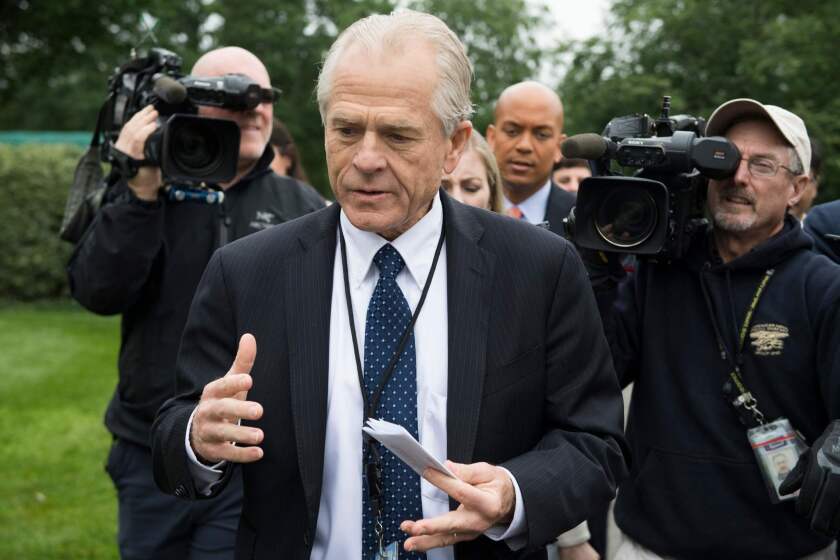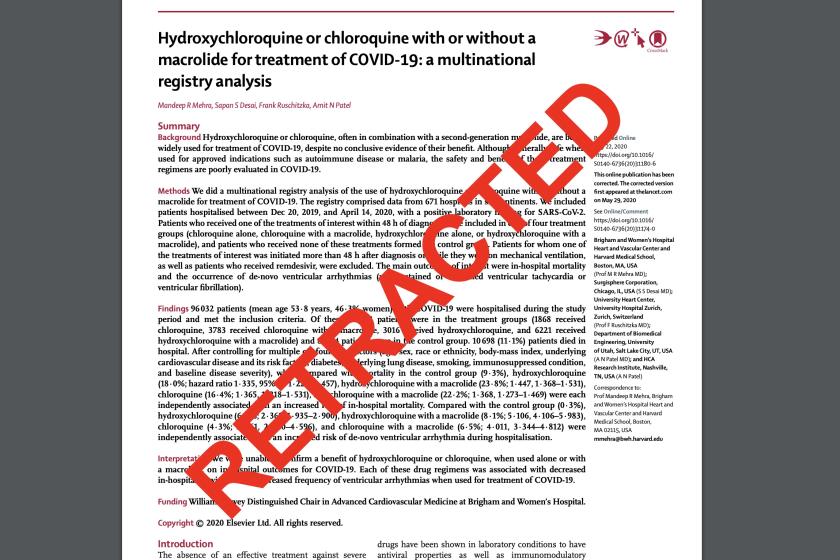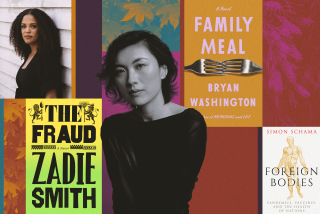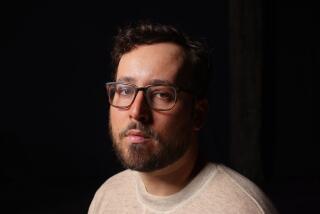Column: With ‘Arrowsmith’ (1925), a Nobel novelist foretold our mishandling of the coronavirus
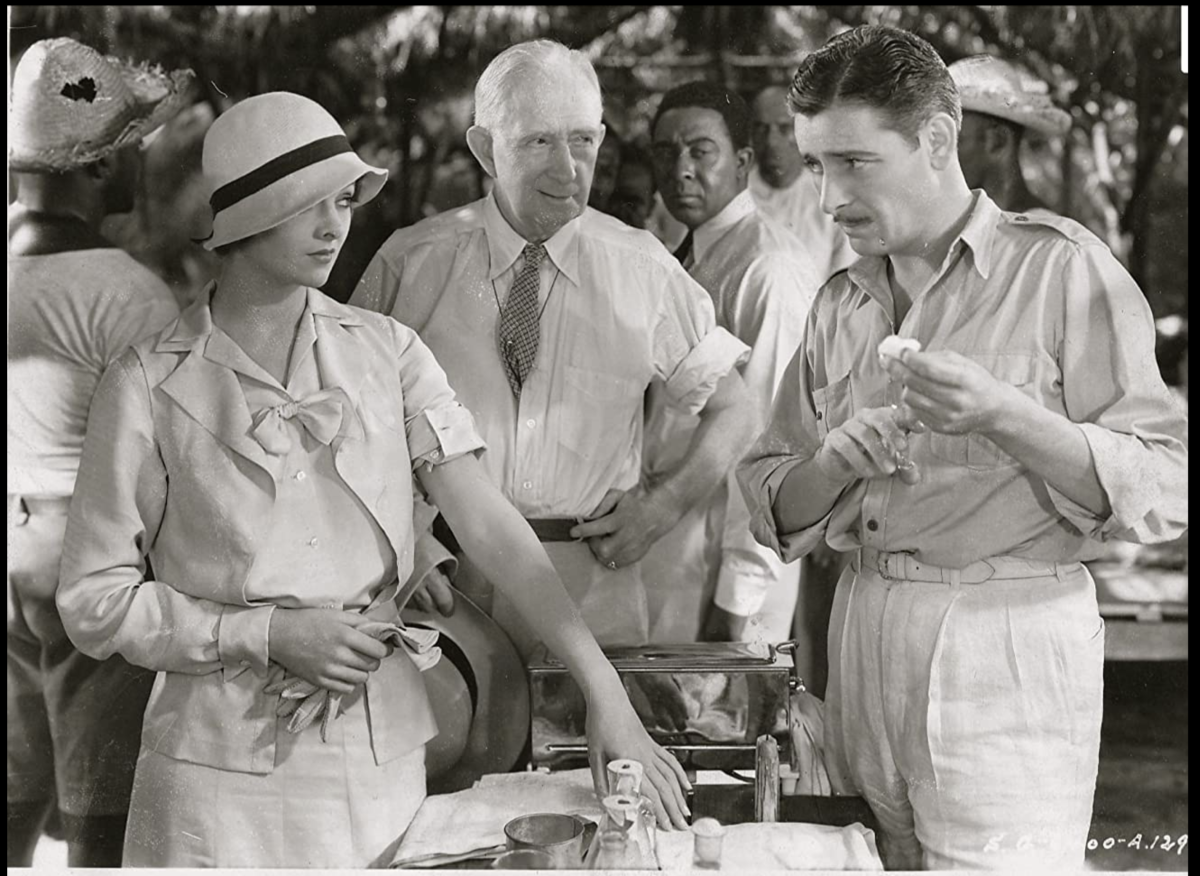
- Share via
America has had a curious relationship with Sinclair Lewis, the very first of our Nobel laureates in literature.
“The books are little read today, and he’s seldom discussed in his native land outside his home town, Sauk Centre, Minnesota,” lamented Gore Vidal in 1992. “Sinclair Lewis seems to have dropped out of what remains of world literature.”
Yet he left behind, if not a particularly influential style, a galaxy of recognizable American types — the provincial middle-class conformist George Babbitt, the evangelical charlatan Elmer Gantry — and, less well-known but more relevant to our current healthcare crisis, the idealistic physician Martin Arrowsmith.
Reading ‘Arrowsmith’ now we are humbled, if not puzzled, that so many of the same questions remain unresolved.
— David J. Eisenman, University of Maryland
“Arrowsmith,” published in 1925, is widely considered Lewis’ most accomplished novel; he was candid with his publisher in considering the book grist for a Nobel Prize. “Arrowsmith” won the Pulitzer Prize in 1926, but Lewis refused it, stating that the Pulitzer committee was too narrow-minded in deeming any novel the “best of the year.” The Nobel Prize would come in 1930, and was accepted.
The book has been relevant to generations of medical students for its depiction of the conflicts faced by the young Martin Arrowsmith in deciding whether to embark on a career in research or as a clinical physician.
That’s the point made by David J. Eisenman of the University of Maryland School of Medicine in an article about “Arrowsmith” published last month by the Journal of the American Medical Assn. Eisenman’s article prompted me to reread the book, which had gathered dust on my shelf over the decades. It was a revelation.
Eisenman writes: “‘You should read Arrowsmith,’ I have long told aspiring clinician-scientists I interview, as a way of getting them to think about which of the two career tracks drives them more.”
William Faulkner, who was born in Mississippi 117 years ago today, was America’s poet and prophet of race.
He also points out the parallels between the challenges Arrowsmith and his colleagues face and those raised by the current pandemic, almost a century later.
“It is indeed humbling to see history repeat itself without our having resolved some fundamental scientific unknowns or learned some of its most important lessons,” Eisenman writes. “Reading ‘Arrowsmith’ now we are humbled, if not puzzled, that so many of the same questions remain unresolved.”
Lewis follows Arrowsmith from his years as a medical student, to a stint as a rural family doctor, followed by service as a regional public health official, a researcher at a well-endowed scientific institution, and ultimately to his effort to eradicate an outbreak of bubonic plague on a Caribbean island.
This path is anything but smooth. In medical school he becomes the protégé of the uncompromising bacteriologist Max Gottlieb, who remains Arrowsmith’s mentor almost all his life; practicing medicine in his wife’s rural hometown, he is constantly beset by her disapproving family; as a public health official, he bristles at the unscientific ballyhoo of his boss.
Finally he fetches up at an elite research lab (based on the Rockefeller Institute), and he’s pressured to publish premature research results so the lab can claim glory in the work.
Along the way, Arrowsmith encounters anti-vaccinationists, public resistance to wearing masks during influenza epidemics, the persistence of ignorance in the face of scientific findings, and the difficulty of balancing the “compassionate use” of unproven remedies with the need to establish their efficacy by denying them to a control group.
He encounters other obstacles, not least his own personal shortcomings, which include a tendency to drink and an arrogance that at one point leads him to almost destroy his career before it begins.
At the time he was preparing to write “Arrowsmith,” Lewis was on his way to becoming America’s leading literary figure. Based on the mordant tone of his first novel, “Main Street” (1920), and the subsequent “Babbitt” (1922), he was considered a satirist of middle-class American life.
In “Arrowsmith” he toned down the satire, though comic characters still populate the book. After its publication, the betting on who would become America’s first Nobel laureate in literature was split between him and Theodore Dreiser, who never won.
Through his death in 1951 and a couple of decades thereafter, Lewis’ books remained popular. Hollywood filmed several, some more than once, placing its greatest stars in the leading roles — Burt Lancaster as Elmer Gantry, Walter Huston as Sam Dodsworth, Spencer Tracy as Cass Timberlane, and Ronald Colman as Martin Arrowsmith.
In 1936, the New Deal’s Federal Theater staged the audacious project of 21 separate productions of a play based on Lewis’ novel “It Can’t Happen Here,” about a homegrown fascist dictator based on the career of Huey Long, all premiering coast to coast on the same October night — Seattle’s was produced by the city’s Negro Theater, New York had productions in English, Spanish and Yiddish.
Lewis’ star has dimmed in the shadow of America’s nine subsequent Nobel laureates, among them Eugene O’Neill (1936), T.S. Eliot (1948), William Faulkner (1949), Ernest Hemingway (1954) and Toni Morrison (1993).
It may be that Lewis’ flat prose and straightforward storytelling fail to grip modern audiences. His first wife, Grace Hegger, observed in a 1955 memoir, “It is significant that he created no school of writing as have Hemingway and Faulkner, Henry James and Flaubert. He influenced public thinking rather than public writing.”
Another flawed study of treating COVID-19 with antimalarial drug chloroquine gets Trump’s endorsement — naturally.
A rereading of “Arrowsmith” today might revive a Lewis vogue. He set out to create a heroic character and succeeded admirably not only in giving us a three-dimensional hero with feet of clay, but also in placing him on a stage of outstanding scientific and medical verisimilitude.
Both aspects of the book owe much to Paul de Kruif, a bacteriologist and pioneering science writer (de Kruif’s classic “Microbe Hunters” remains in print today, 94 years after its initial publication in 1926), who served as Lewis’ sounding board during the book’s creation.
De Kruif is known to have provided Lewis with the scientific and medical backdrop that gives “Arrowsmith” its depth and immediacy. Literary scholar James M. Hutchisson of the Citadel has suggested that de Kruif’s contribution was more than scientific details.
“From his own various experiences de Kruif produced many of the prototypes upon which Lewis based his characters,” Hutchisson wrote in 1992; “from de Kruif’s own career Lewis drew much of the plot about Arrowsmith’s career; and from de Kruif’s personal philosophy Lewis extracted the basis for Arrowsmith’s idealism.”
There are signs that de Kruif even contributed some of the writing. At one point there was talk of giving de Kruif co-author status, but Lewis’ publisher refused and de Kruif later insisted that the writing was all Lewis’.
Major retractions on coronavirus research show something is rotten in scientific publishing
For all that, it’s the path of Martin Arrowsmith’s work as a bacteriologist and epidemiologist that stands out today.
Consider the reaction of rural farmers to the orders of Arrowsmith, at that point serving as a public health official in the farm belt, aimed at eradicating tuberculosis.
“None of their rights as American citizens was better established ... than the privilege of being ill,” Lewis writes. “They fumed, ‘Who does he think he is? We call him in for doctoring, not for bossing. ... Won’t stand for nobody talking to me like that!”
During a typhoid epidemic, local residents convince themselves that the sickness “came from a tribe of squatters six miles up the creek, and they considered lynching the offenders” even though Arrowsmith concludes that the culprit is an itinerant seamstress carrying the disease, but without symptoms.
“‘Here we go and show him where there’s some hellhounds that ought to be shot,’” grouses a villager, “‘and he doesn’t do a darn thing but shoot a lot of hot air about germicidal effect or whatever the fool thing is.’”
Among the townspeople, “Martin was blamed for too strict inspection of milk, for insufficiently strict inspection of milk ... and when a case of small-pox appeared in the Bohemian section, there was an opinion that Martin had gone out personally and started it.”
On the Caribbean island of St. Hubert, the administration decides to save money by firing the lone rat-catcher. When the rat population explodes and spreads plague, the administrators deny the presence of the disease because “everyone knew that the West Indian climate prevented plague. ... There was no quarantine, no official admission.”
Reports one leader, “Honestly, there’s only been a few deaths and I think it’s all passed over. If we were to establish a quarantine, it would ruin the tourist and export business.”
The final parallel concerns the internal conflict facing Arrowsmith, sent to the island to test a germicidal “phage,” between inoculating the entire population or leaving half the residents unimmunized as a control group to determine its efficacy. Until the very end, Arrowsmith sticks to his trial protocol, until a personal tragedy leads him to abandon it and give the shot to everyone.
The epidemic passes, but it can never be known whether his discovery helped. The very same conundrum confronts us now, as medical providers ply COVID-19 patients with untested treatments in desperation to stave off an infection with no established cure.
“In ‘Arrowsmith,’ the commitment to scientific integrity is easier made than honored,” Eisenman writes. “Perhaps we should be reassured that we are rethinking things a century later, but reading the novel now provokes at least as much frustration that we have not learned from the past.”
Like all great novelists, Sinclair Lewis was writing about his own time, and teaching us about our time too. We should be reading him again.
More to Read
Inside the business of entertainment
The Wide Shot brings you news, analysis and insights on everything from streaming wars to production — and what it all means for the future.
You may occasionally receive promotional content from the Los Angeles Times.

